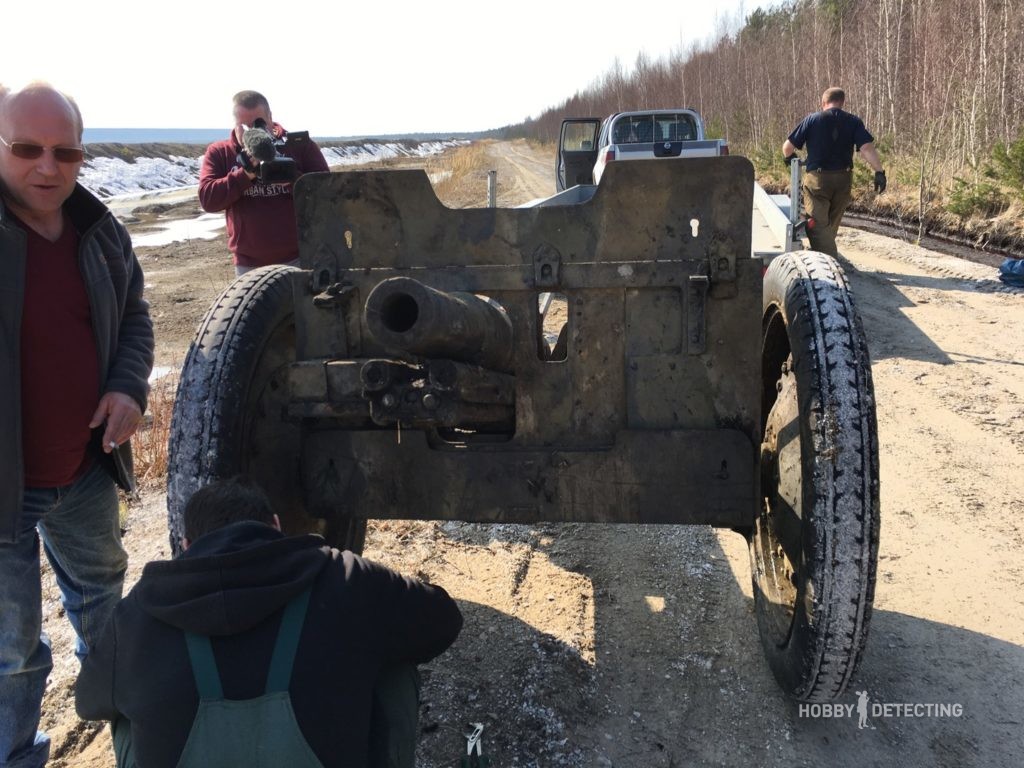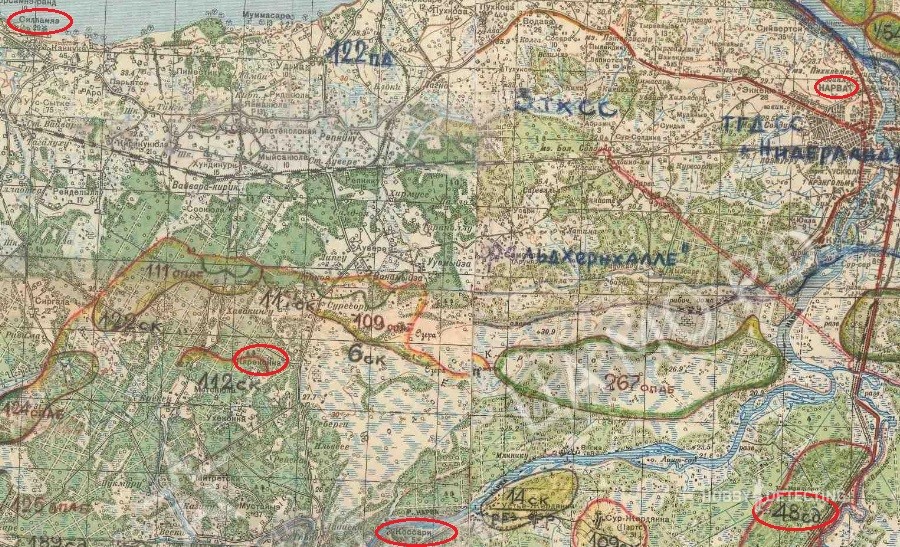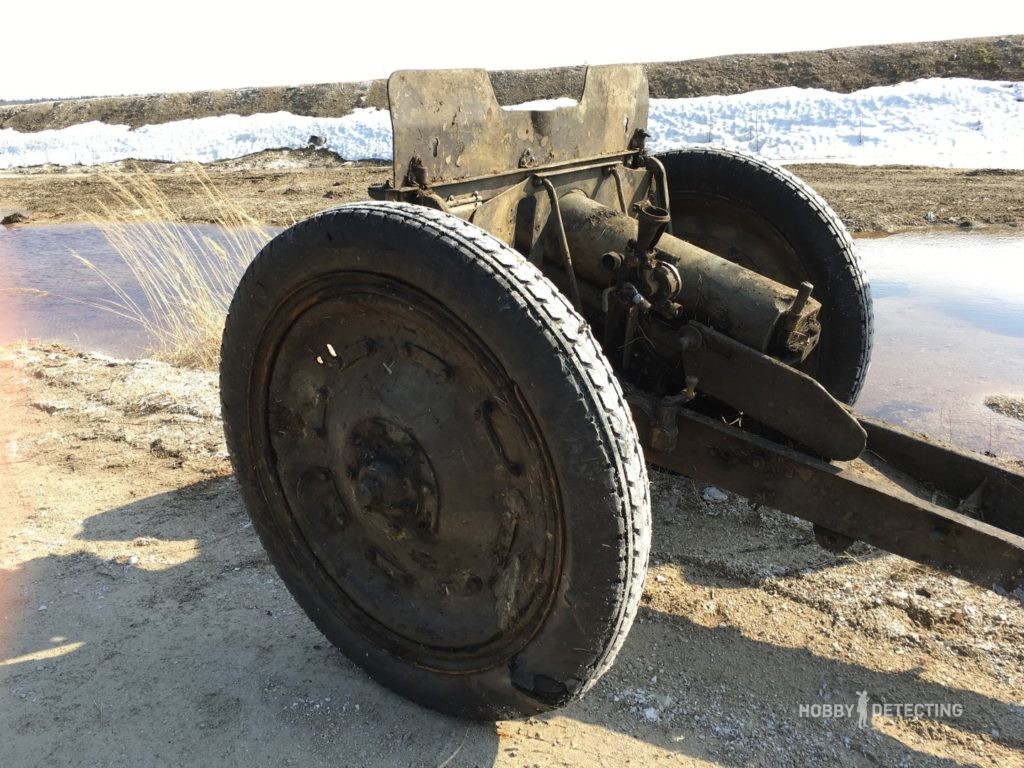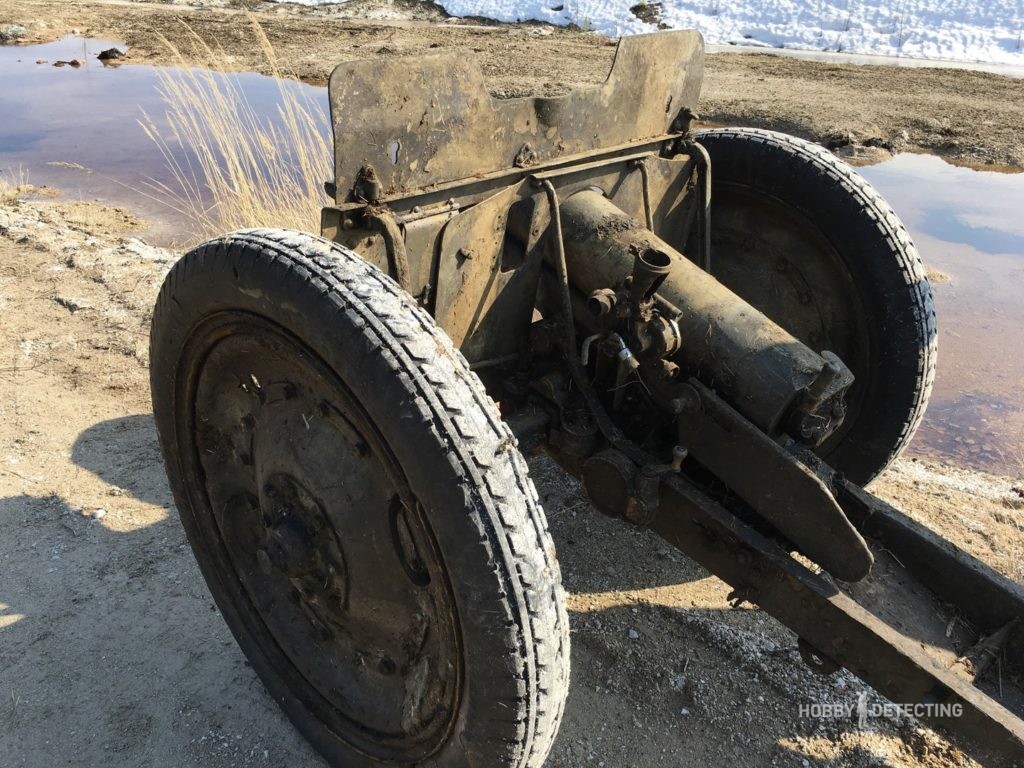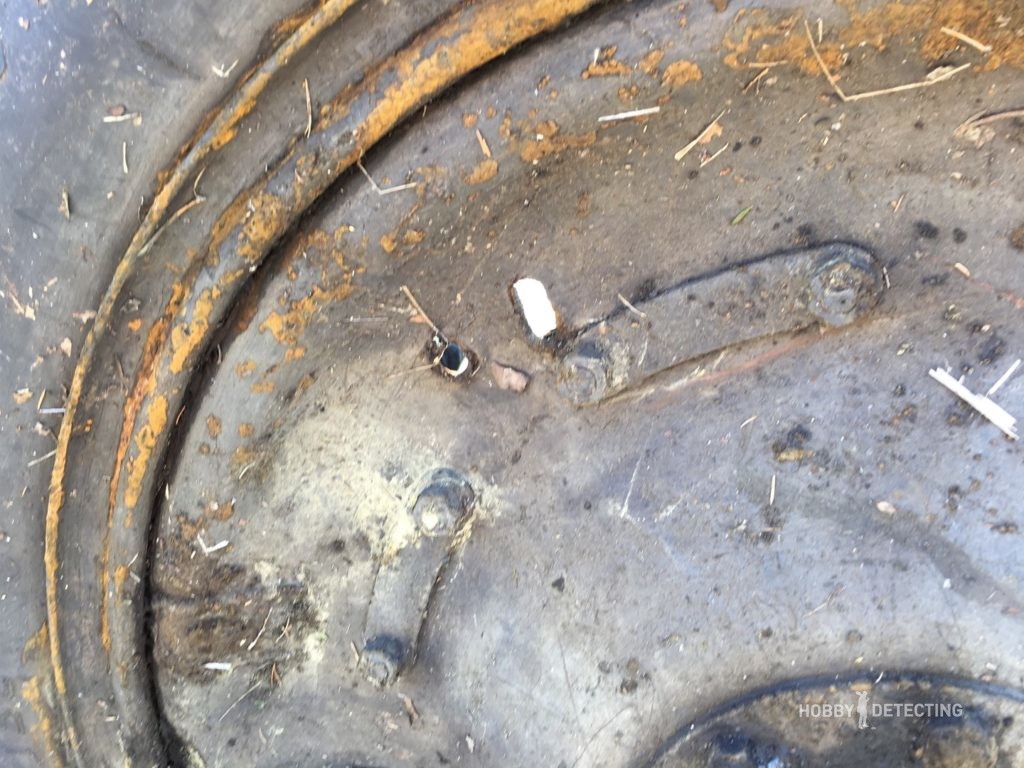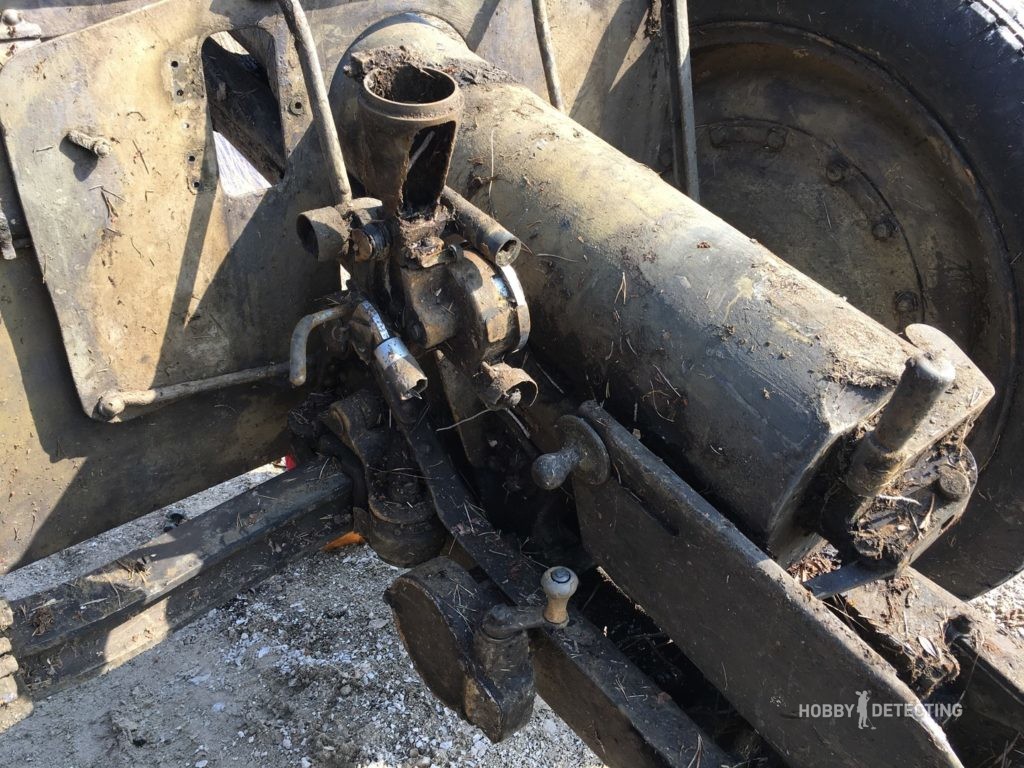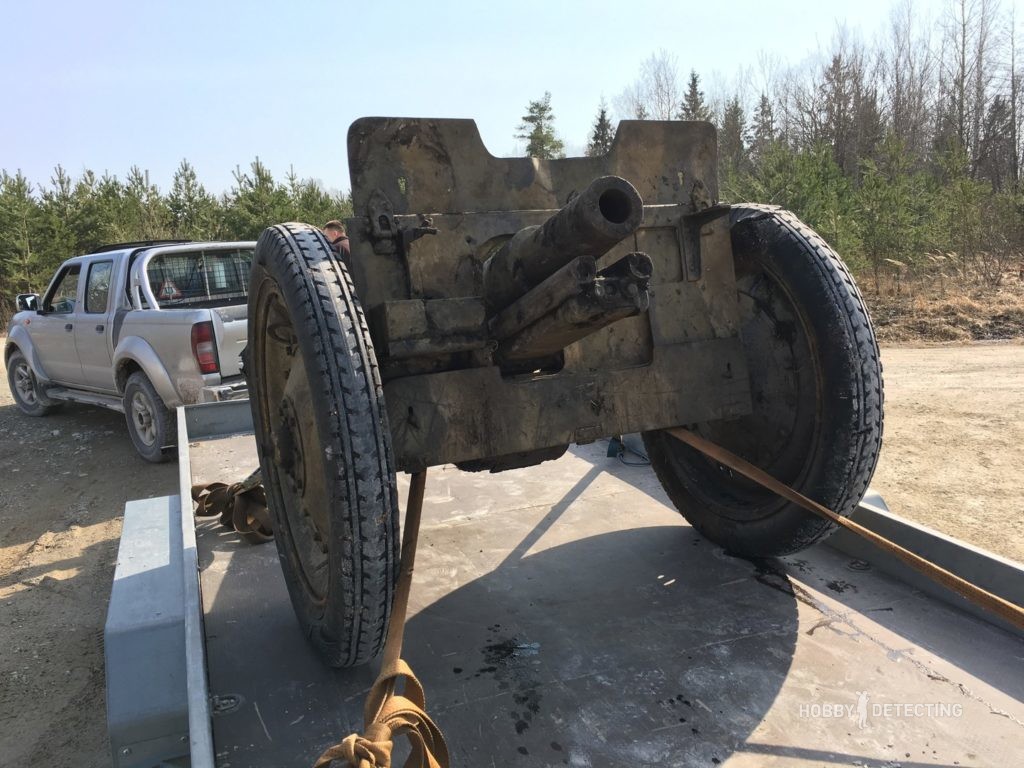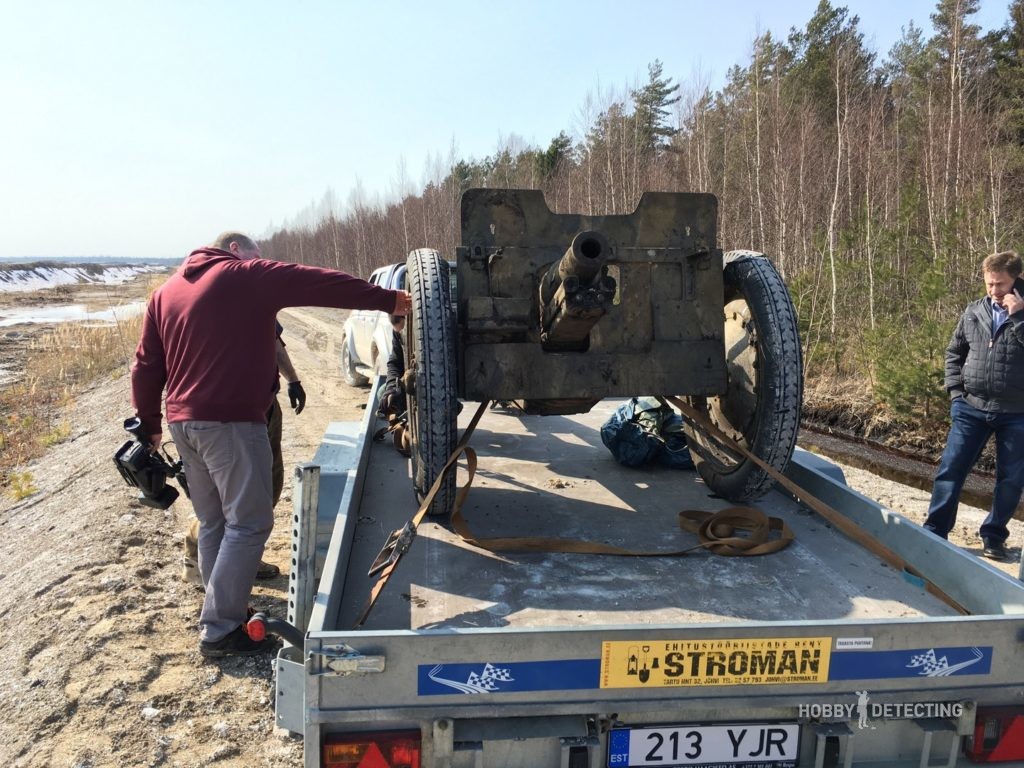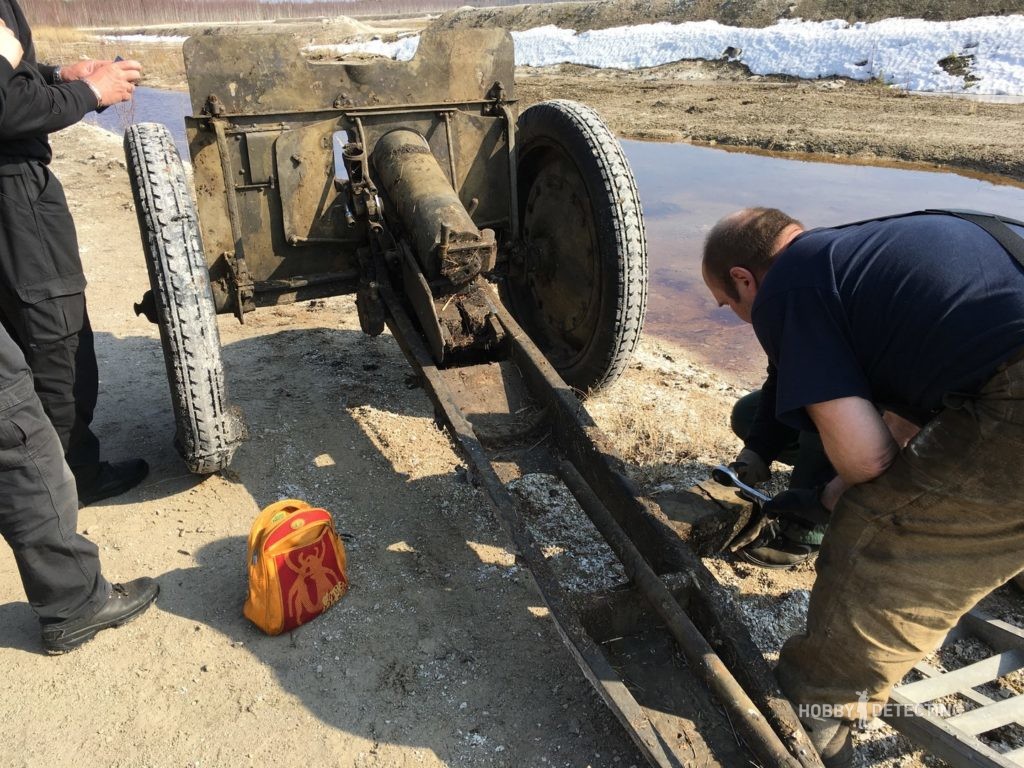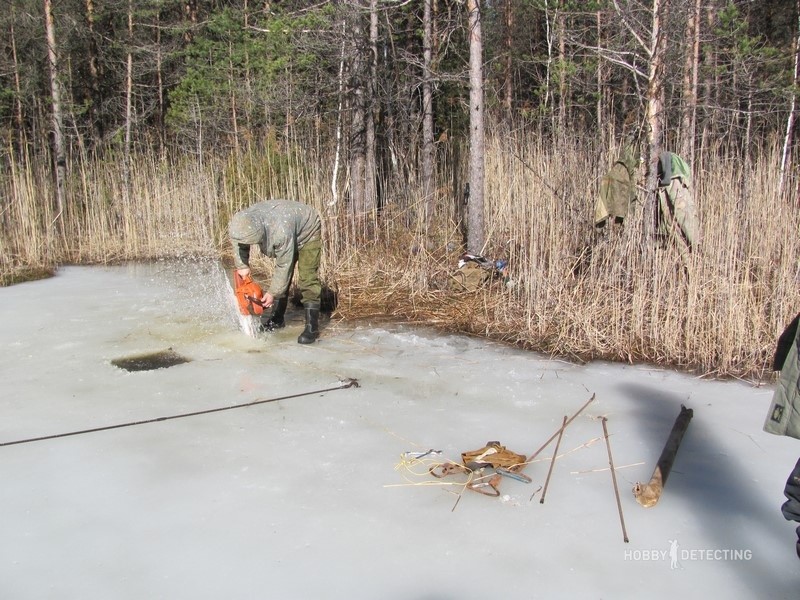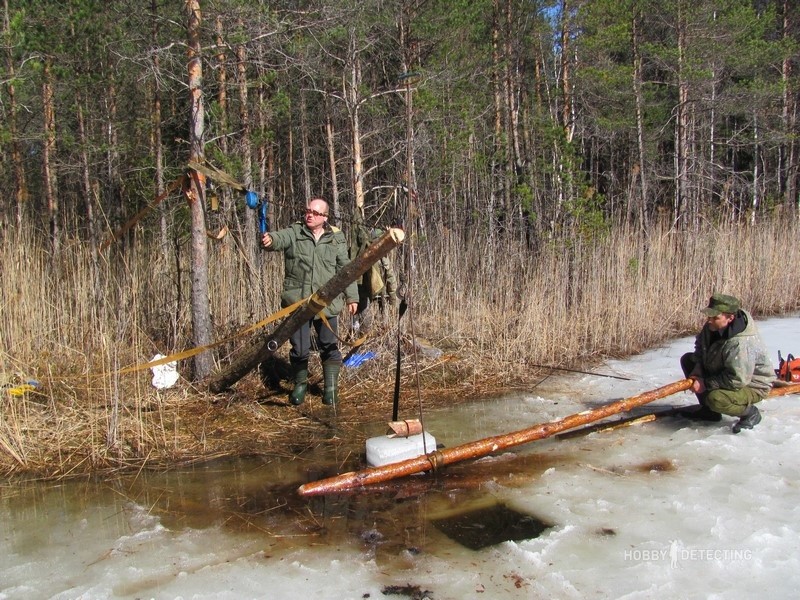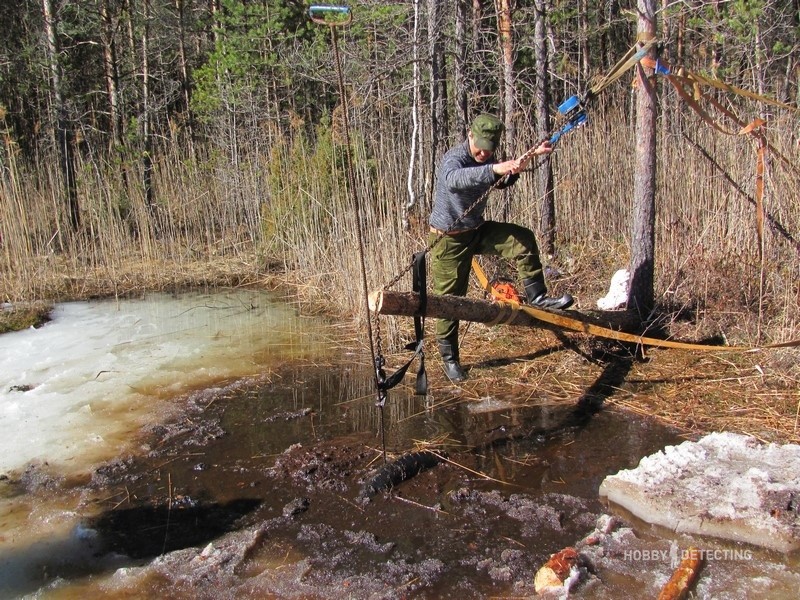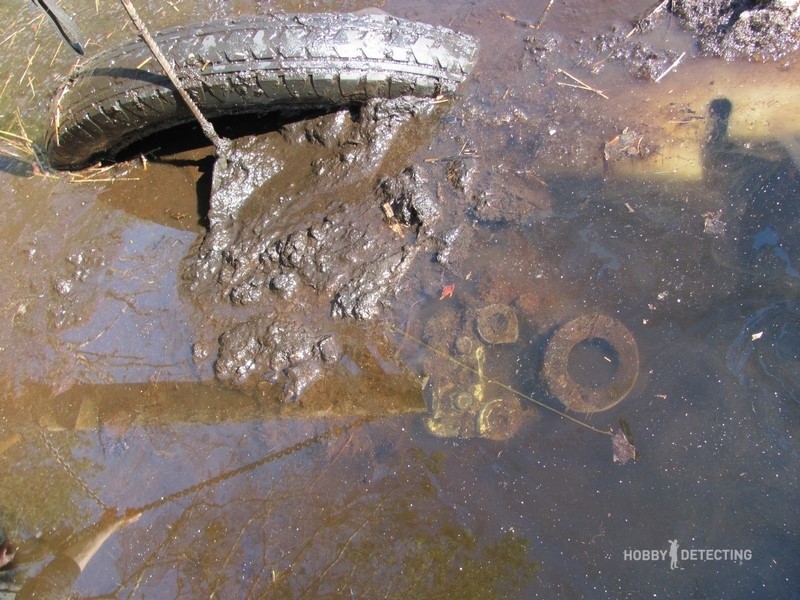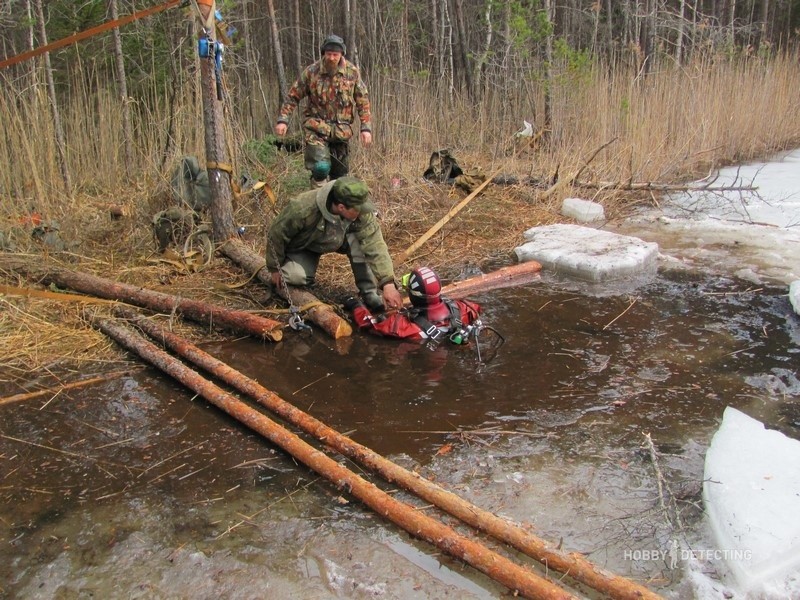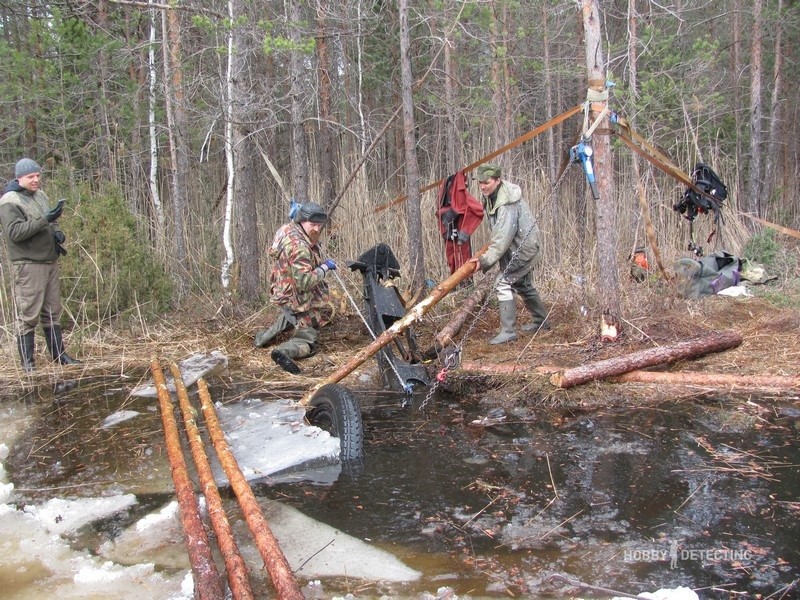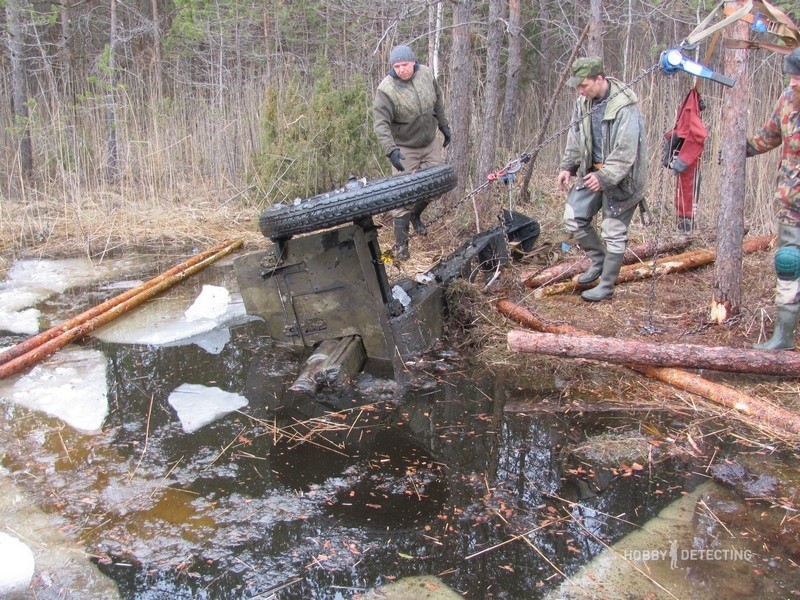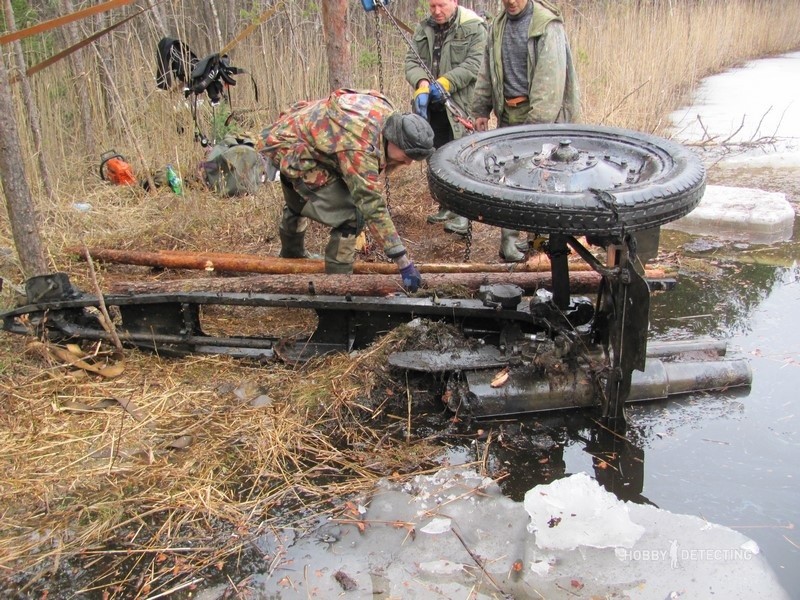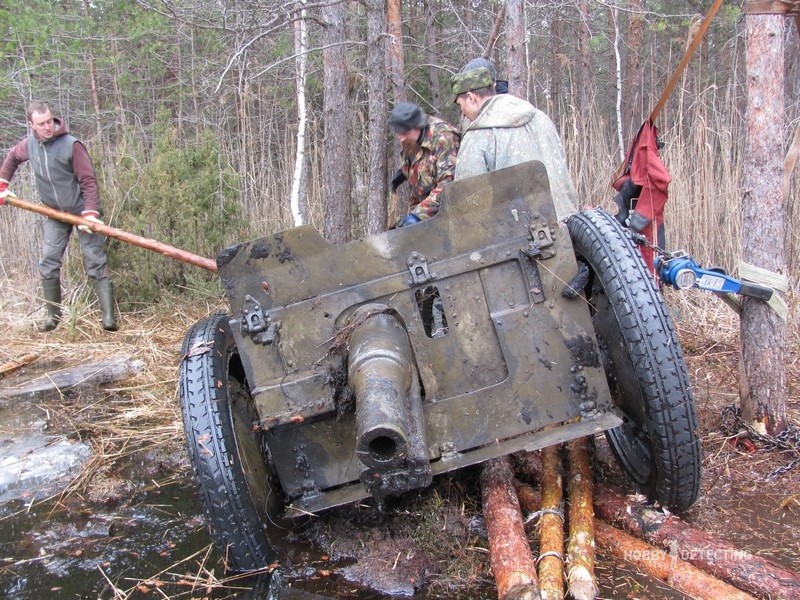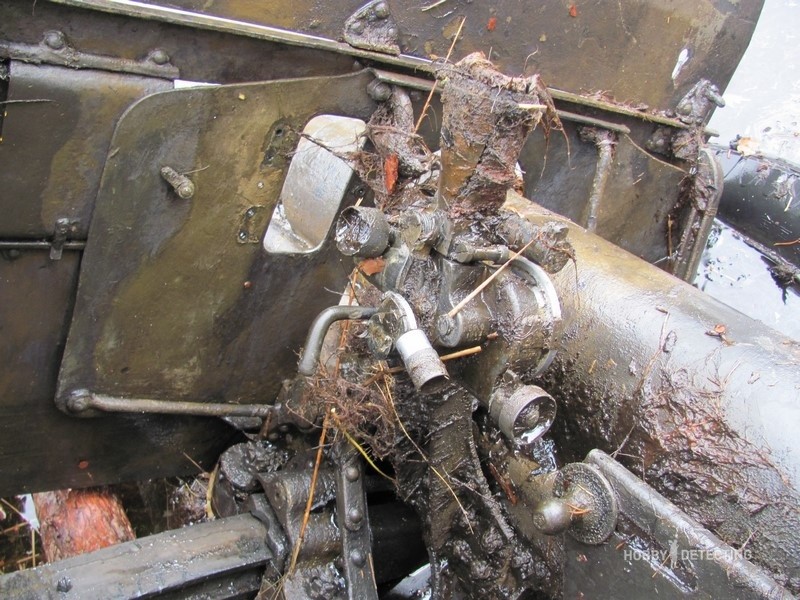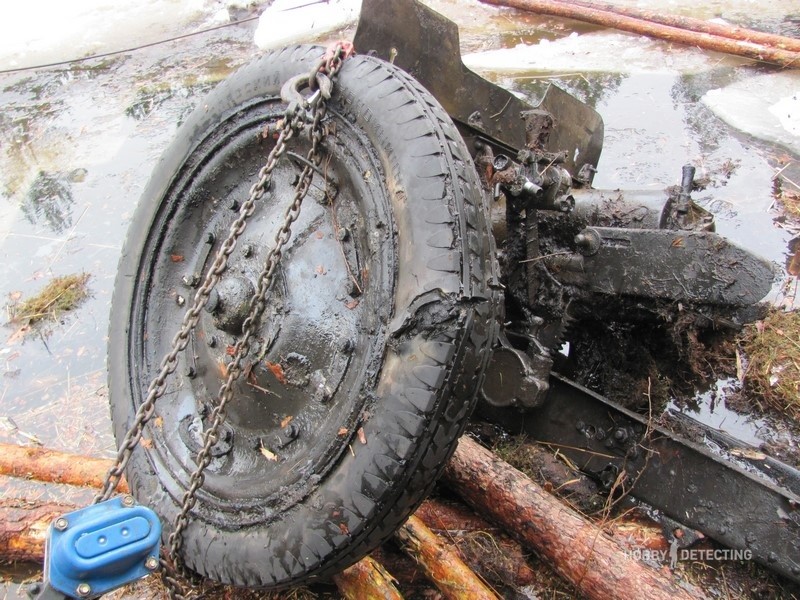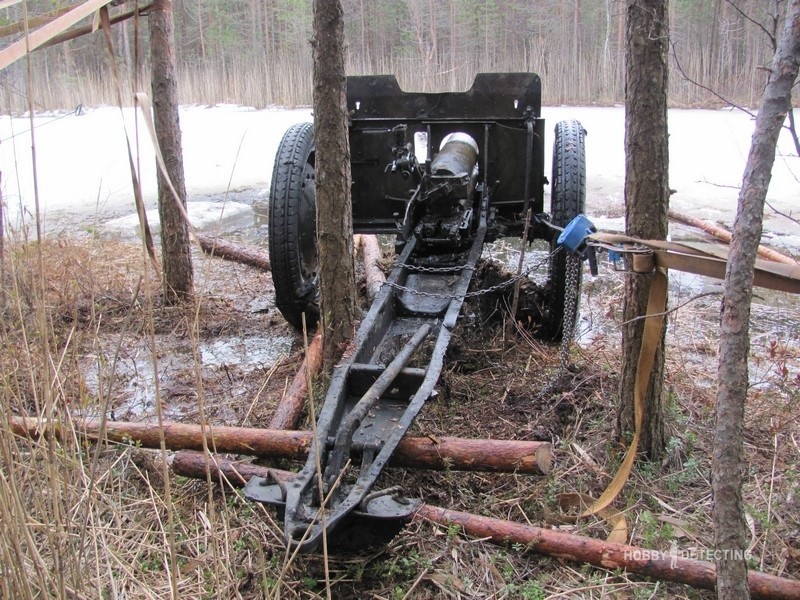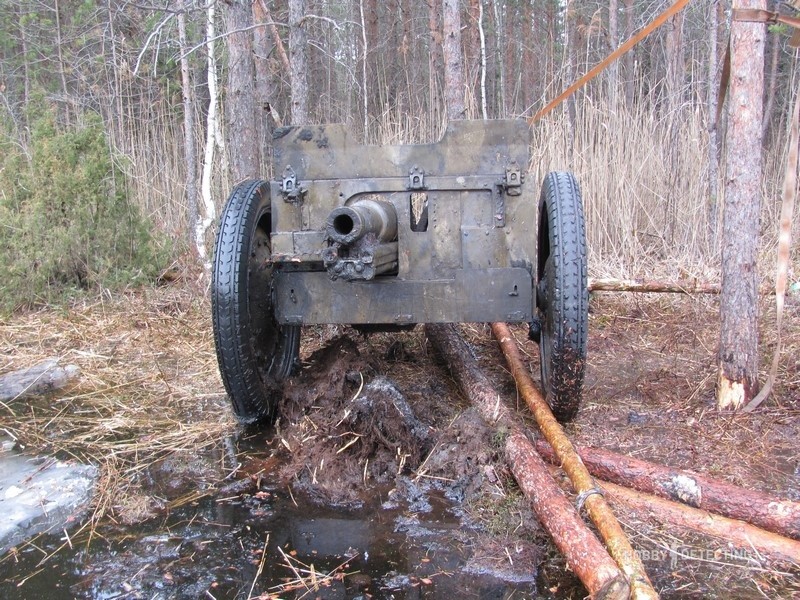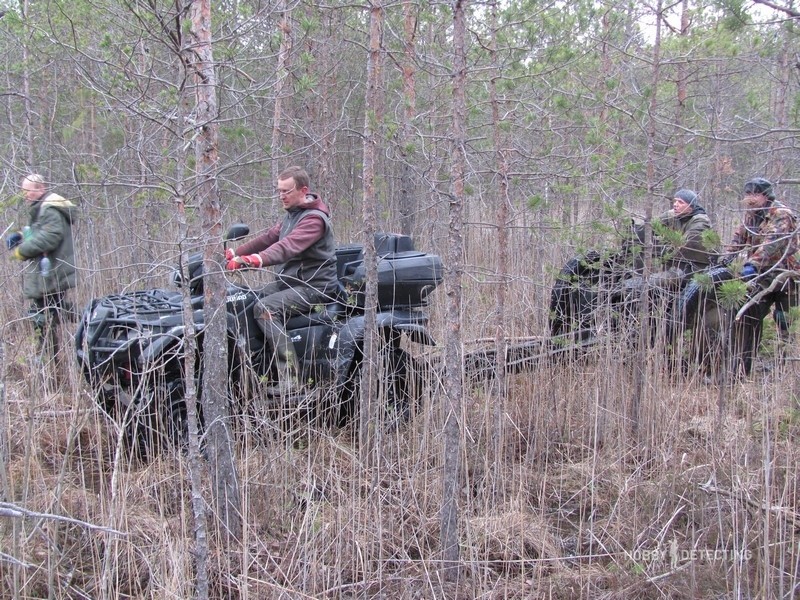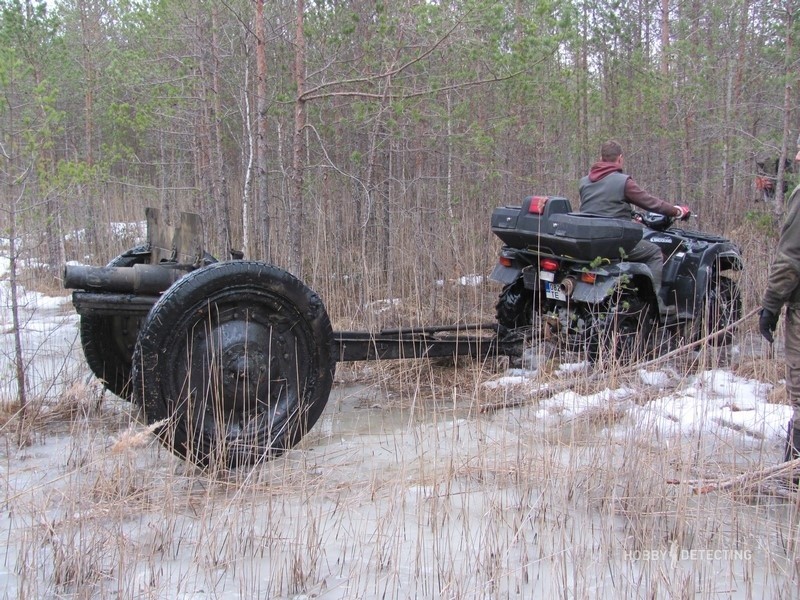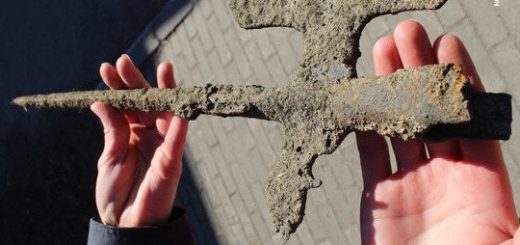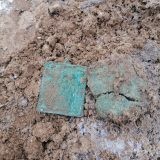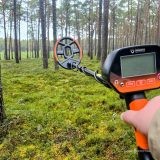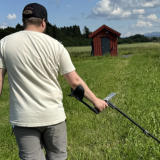76.2 mm Regimental Gun M1927 Found In Estonia (Updated, Photos+)
The 2018 detecting season has not only begun for the diggers of coins in the fields because war-relic hunters have also started. This year, the members of the Otsing Club (“detecting club”) found a 76.2-mm regimental gun, the 1927 model, in the swamps of Narva. A total of 18,000 such guns were produced, of which only a small number have survived to this day. It’s good that in Estonia, the Sinimäe museum will now exhibit its own copy of this interesting weapon.
But how did this gun get into the swamp? Everything is very simple – in the Kyrgyzoso swamp, in the south of Narva, in 1944, there were very bloody battles where parts of the Red Army were trying to reach the Narva-Tallinn road and thus encircle the German troops on the left bank of the Narova River.
Unfortunately, this idea was not realized, but every year a lot of diggers go to find iron remains of that war and the fallen soldiers of both sides.
An interesting fact is that the gun was located at a depth of seven meters in the swamp and it was quite difficult to pick it up, it was not done without the help of divers.
“This was a difficult search operation. We already knew about this drowned gun – we searched for three years. The guys from the club “Otzing” gave a lot to find it. There was a lot of hard work. The diver had to dive into the swamp, pick it up and carry it for a long distance across the swamp. He used two days to do this, “- the board member of the club “Otsing” Igor Sedunov explained. “Judging by how the gun was preserved, I think that there will be very little work with it – the main thing will be to preserve the paint. And I hope that in one and a half or two months, it will be on display at the Sinimäe Museum.”
As already mentioned above – everyone will be able to admire the gun at the Sinimäe museum in two or three months.
And here are some photos:
The weight of the gun in the fighting position: 920 kg.
The rate of fire: 10-12 shots per minute. Crew needed: 7 people.
The 76.2-mm regimental gun 1927 model took part in all the prewar conflicts with the participation of the Red Army and took a wide part on all fronts of WW2.
This weapon was also used by the Wehrmacht and the Finnish Army, which they inherited as a trophy.
The gun was used for fire support to the infantry and mechanized parts/cavalry.
Whether it was a captured cannon or if it was drowned in the winter by soldiers of the Red Army during the fighting is still unknown. Most likely, some soldiers of the Red Army lost the gun.
The Germans noted the simplicity and effectiveness of this weapon and even began developing and manufacturing their own ammunition. This gun was equipped with German optics. In the Finnish army, this weapon was in service until the 1960s.
An interesting feature of the gun was its aerotransportability, which proved to be in demanded in practice – in the besieged Leningrad at the end of 1941, 457 76-mm regimental cannons were manufactured, and brought to Moscow by airplanes and provided significant assistance to Soviet troops in the battle for Moscow.
Update – new details and photos of the finding and recovering process
New details of the gun’s recovery and additional photos directly from the process have been announced.
As it was written above – before the recovery of the gun, a lot of work was done to locate the lost gun. It was possible to find it with the help of a record in the journal of military operations.
It is written in the journal: “It was not possible to find the gun in the swamp with a stick of 4-5 meters in length,” then a Russian-made magnetometer was used to search for a large metallic object at a large depth. The recovery of the gun itself was set for early spring when the swamp was still ice-bound.
They cut through the ice and began to hook the gun with hooks.
A winch to a tree, that’s the whole process of recovering it, rather complicated.
The wheel appeared first.
And then the gun showed its muzzle. A beautiful picture – a gun seeing daylight for the first time in 74 years. Just think about it.
But, on the first try the hook flew off and the gun sank back to the bottom. Continuation of the recovery was scheduled for the next day.
They could not continue without a diver because the gun needed to be better secured, so as not to lose it. The ice had also been expanded to improve the chances of an undamaged gun.
Actually, this time the gun was dragged up the other way around.
Do not forget that the gun weighs almost a ton.
And it’s not so easy to manually recover a gun in the woods.
Try to do such physical education on one normal day …
Well, the gun got to the surface, and now they only had to turn it around.
The photo shows that the original paint had been preserved and this is of great value, it is necessary to restore the gun while preserving native painting. Although, there is damage on the gun carriage from shell fragments.
The wheel on the left shows damage from the fragments.
Just look at that condition…
The damage itself from the splint on the rubber. I wonder what happened with the crew?
They finally recovered the gut, but now they had to figure out how to bring it to the road where it will be possible to load it onto the trailer.
The right wheel, as seen in the photo, was also hit by fragments. Was the battle itself so close to the gun?
Advantages of the XXI century – the gun can be attached to an ATV and dragged.
But because they were transporting it almost along the swamp, the cannon often got stuck, and therefore it was still necessary to push the gun.
The two original wheels worked pretty well, despite the 74 years of being underwater, they still retained the mobility and hardness.
On the way to the road, three rivers had to be crossed.
And finally, the gun was dragged to the road. And how did the artillerymen do this during the war? All by themselves, or with the help of a horse.
And the final move: the gun was loaded on the trailer.
Incredible, huh? Its not every day that someone finds such things in the swamp, and even in such a condition! And how many more have drowned all over the Eastern Front?
Amazing condition, isn’t it? For more about war relics hunting, look here!

